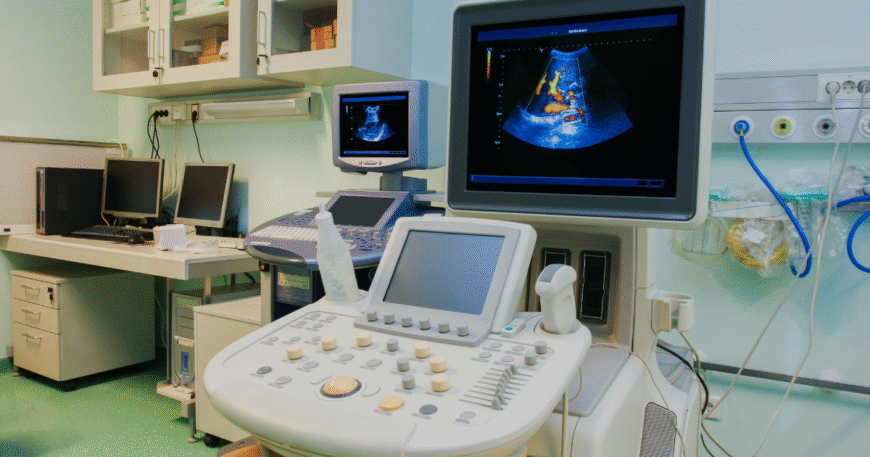
What to Expect in a Labour Room in Hospital: A Guide for New Parents
For most expecting parents, the labour room in hospital can feel like unfamiliar territory. While childbirth is a natural process, it’s also supported by science, skilled professionals, and specially designed spaces filled with equipment and protocols to keep both mother and baby safe.
In this blog, we’ll guide you through what to expect when you enter a labour room in a hospital. From the tools used during delivery to the staff you’ll meet and the steps taken to manage hygiene and safety, this comprehensive overview is designed for first-time parents who want clarity and confidence.
_________________________________________________________________________
The Purpose of the Labour Room
The delivery suite is a specialized medical space where childbirth takes place. It’s designed to accommodate both routine births and emergencies. Hospitals follow strict guidelines for maternity care setup, ensuring all necessary equipment, instruments, and medication are within reach.
_________________________________________________________________________
What Happens First When You Arrive
When you arrive, a team of nurses or midwives will admit and monitor you. They will check your vital signs, including blood pressure, temperature, and fetal heart rate. They may also perform a CTG test to assess the baby’s heartbeat and the strength of your uterine contractions.
Doctors assess the dilation of the cervix and determine whether the mother is in early or active labour. Based on the situation, they may decide to admit you to the delivery area immediately.
_________________________________________________________________________
Key Equipment in Labour Room Settings
A labour room in a hospital is equipped with various tools to support safe childbirth. Some of the essential equipment includes:
- Delivery bed: Adjustable for different birthing positions and comfort levels
- CTG machine: Used to monitor the baby’s heart rate and contractions
- Suction devices: To clear airways if necessary
- Fetal doppler: For quick checks of fetal heartbeat
- Oxygen supply: In case either the mother or newborn needs respiratory support
These pieces of equipment in labour room setups are critical for tracking and responding to mother-baby health indicators throughout labour.
_________________________________________________________________________
Labour Room Instruments Names You Should Know
Inside the delivery suite, you’ll find sterile tools carefully prepared in kits.. These medical instruments are essential for ensuring a safe and smooth delivery. Each one has a specific role during the different stages of labour and childbirth. Common labour room instruments names include:
- Forceps and scissors
- Cord clamps
- Sponge holders
- Surgical blades
- Sutures and needle holders
Staff sterilize all these items before use and keep them ready for any procedural needs.
_________________________________________________________________________
Medications and Drugs Used in Labour Room
The medical team administers different medications during delivery depending on the situation. Some of the most frequently used drugs used in labour room care include:
- Oxytocin: To induce or strengthen labour contractions
- Misoprostol: To prevent or treat postpartum bleeding
- Lidocaine: As a local anesthetic for episiotomy or suturing
- Magnesium sulfate: For high blood pressure or seizures
Skilled professionals administer these medications based on clinical protocols.
_________________________________________________________________________
Infection Control in Labour Room
Hospitals follow stringent hygiene measures to prevent infections in labour rooms. Staff wear gloves, masks, and gowns. Surfaces are regularly disinfected. Instruments are sterilized, and waste disposal is handled carefully. According to WHO, proper infection control in labour room environments reduces maternal and neonatal infections significantly.
_________________________________________________________________________
Monitoring and Documentation
The staff in the labour room constantly monitor the mother and baby’s vitals. This includes:
- Recording contraction patterns
- Measuring fetal heart rate
- Tracking medication administered
- Charting labour progress
These records help in making informed decisions during labour and also provide important documentation in case of complications.
_________________________________________________________________________
The Role of the Labour Room Team
You’ll meet various members of the care team including:
- OB-GYN or consultant
- Nurses and midwives
- Pediatrician or neonatologist (especially during high-risk births)
- Anesthetist (if you require an epidural or other pain relief)
They work in coordination to ensure the safest delivery possible.
_________________________________________________________________________
What Happens After Delivery
Once the baby is born, the medical staff perform initial checks in the same room. They may place the newborn in a warmer or transfer them to the nursery depending on their condition. Doctors check Apgar scores, clear airways if necessary, and initiate skin-to-skin contact if the baby is stable.
Meanwhile, the mother may receive stitches if there was a tear or episiotomy. Uterine massage and oxytocin may be used to prevent excessive bleeding.
_________________________________________________________________________
Guidelines for Labour Room Practice
Hospitals in Pakistan and globally follow standardized guidelines for labour room procedures. These include:
- Maintaining emergency readiness
- Ensuring access to all necessary labour room equipments
- Following infection control and sterilization
- Keeping pain relief options available
- Educating and involving parents in decision-making
Organizations such as WHO and local health authorities continuously update these guidelines based on research and clinical outcomes.
_________________________________________________________________________
What New Parents Should Bring
To make your hospital stay more comfortable, pack the following:
- Maternity clothes and slippers
- ID and medical records
- Newborn clothing and diapers
- Toiletries and towels
- Birth plan if applicable
Tour the hospital beforehand to see what facilities the labour room offers.
_________________________________________________________________________
Sources and References
- World Health Organization (WHO): Safe Childbirth Checklist
- National Institute for Health and Care Excellence (NICE): Labour and Birth Guidelines
- The Lancet (2021): Maternal and Neonatal Infection Reports
_________________________________________________________________________
FAQs
Q1: What does a labour room in a hospital typically look like?
It has a delivery bed, monitoring machines, emergency supplies, and neonatal care stations.
Q2: Is an epidural given in the labour room?
Yes, if pain relief is required and approved by the medical team.
Q3: What is the role of a CTG machine during labour?
It monitors the baby’s heartbeat and contractions to ensure the baby is not in distress.
Q4: How does infection control work in a labour room?
It involves using sterilized instruments, PPE, and frequent cleaning of all surfaces.
Q5: What kind of medications are used during delivery?
Drugs like oxytocin, lidocaine, and magnesium sulfate may be administered.
